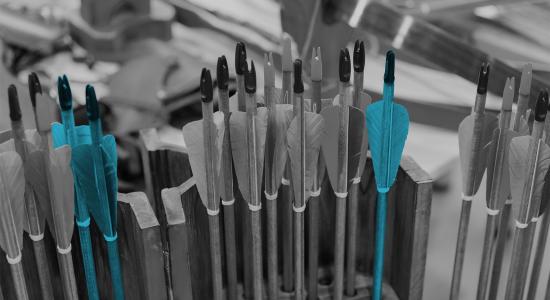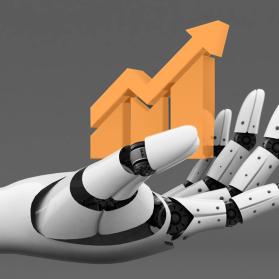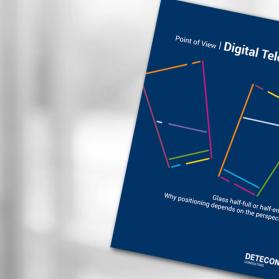In its new yearbook, the user association of the "Cross Business Architecture Lab" (CBA) describes proven management methods that have been further developed by members in a practice-oriented manner in line with current digital challenges. Click here to download the complete yearbook "Building Blocks for Digital Transformation".
In this article from the Yearbook, Dr. Verena Schmidtmann describes a reference architecture for IoT solutions developed in the "IoT Patterns and Architectures" workstream. Unlike most reference architectures in the commercial IoT environment, the participating members of the CBA Lab designed their reference architecture to be product-neutral and reusable in its individual elements right from the start.
"IoT Patterns and Architectures" Workstream
The "IoT Patterns and Architectures" workstream has developed a reference architecture (RA) for IoT solutions. Unlike most reference architectures in the commercial IoT environment, the participating members of the CBA Lab designed their reference architecture from the outset to be product-neutral and reusable in its individual elements.
On the one hand, the reference architecture is intended to help member companies build their own IoT solutions and, on the other, to support them in evaluating commercial IoT solutions. "The reference architecture is both: a guide for our own developments and a checklist/evaluation tool for IoT solutions from vendors," says workstream leader Dr. Verena Schmidtmann from Detecon. Moreover, according to the workstream's perception, a vendor always has an origin and an intention. Therefore, a neutral reference architecture oriented to user needs is needed in order to be able to evaluate commercial solutions in their structure and functionality as well.
The workstream presented a "clickable" PowerPoint that not only contains all the elements of the architecture in the overview, but also describes them in detail and comprehensibly by clicking in a depth hole.
Since the participants in the workstream have already gathered their own experience with IoT solutions and platforms, this was condensed into five principles on which it is based before the actual reference architecture was developed:
- Cross-company for ecosystems IoT solutions do not stop at company boundaries. That's why the reference architecture has been built to work across companies thanks to API management, integration and connectivity.
- Connection to enterprise IT IoT solutions do not function in isolation from "classic" enterprise IT. Therefore, an IoT architecture must take this interaction into account. It was particularly important for the workstream participants to take into account the ongoing digitalization of classic IT. Since by no means all digital business models are handled via the IoT solution alone, but also in enterprise IT, the latter must adapt to the new requirements. Therefore, the architecture of classic IT is also evolving and should also have elements of the IoT architecture in the future.
- Incremental functionality of the reference architecture The workstream participants wanted a reference architecture that contains both the elements needed for pilot projects and those that play a role in enterprise-wide IoT projects.
- Lean The reference architecture should only contain elements that are really needed for an IoT solution. Everything that is only "nice to have" is left out in the first step.
- Reusability The architecture implemented on the basis of the reference architecture should support the largest possible number of IoT use cases on the corporate roadmap with reusable elements.
The architecture is based on the three vertical pillars of edge, integration and enterprise tier. The cross-pillar functionalities of infrastructure management, monitoring and engineering are virtually hooked into these. In addition, there is a security layer, API management, a third-party ecosystem layer and a network layer.
Due to the diversity of use cases, the workstream participants decided to use their own experience with IoT solutions as a guideline for the reference architecture. Since all participants had already built their own IoT solutions, these were plentiful.
The key findings of the workstream are:
- When selecting an IoT solution, it is important to consider the entire lifecycle of the IoT solution, i.e. development, monitoring and operation. Significant reuse of the IoT solution across different IoT use cases can be realized here, especially in the areas of operation and monitoring when viewed separately.
- Keep the IoT platform lean! For the reusability of the core IoT platform capabilities, e.g., in the analytics and machine learning area, it is important to keep this area of the IoT solution lean. Here, one should not be overly influenced by the abundance and fit of solutions on the vendor side for exactly one use case and keep an eye on the breadth of one's own use cases.
- The IoT solution must not only be connected to the existing, classic IT world, but this world itself is also transforming to implement IoT scenarios. Selection and design of IoT solutions must therefore take this fact into account.
- API management and the necessary development of technical to business standards are essential for collaboration in cross-company ecosystems.
You can download the entire study here: Building Blocks for Digital Transformation (only available in German)







